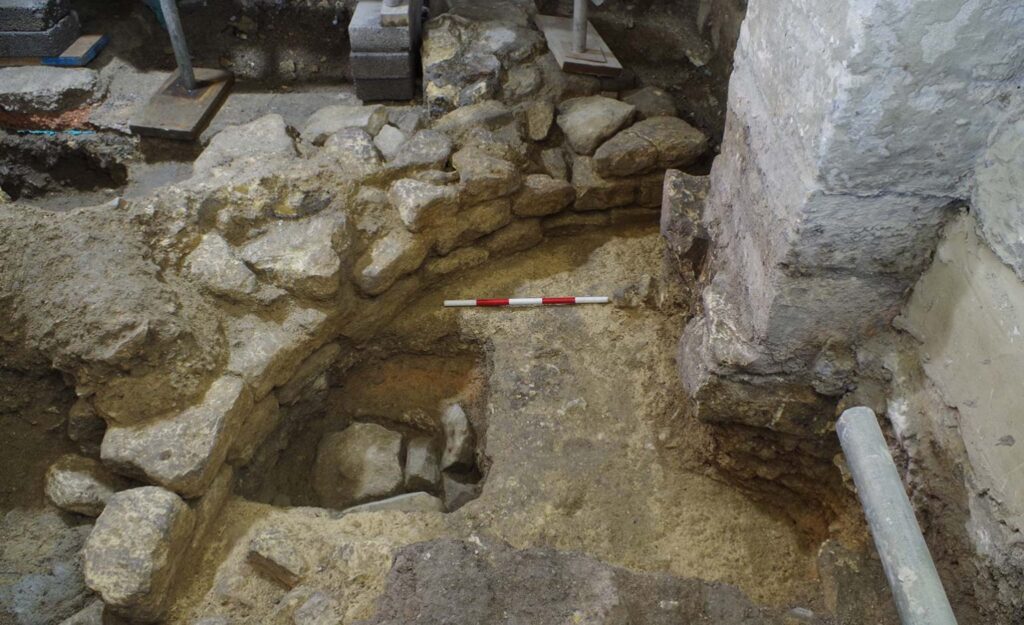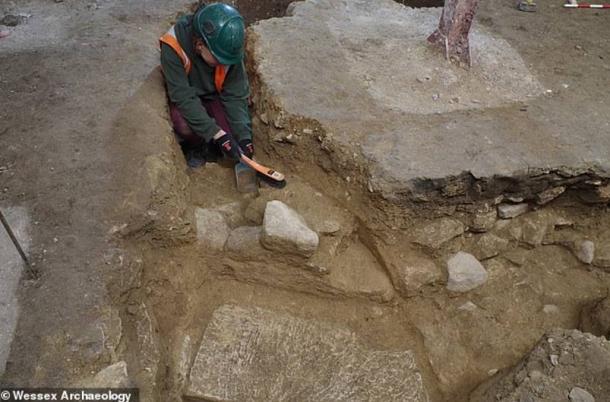Anglo-Saxon Abbey where Lusty King Edgar was Crowned, Found!
The ruins of two stone buildings found during restoration work at Bath Abbey by Wessex Archeology specialist, it was discovered during renovation work at Bath Abbey, to the 8th – 10th century.


It is probably part of the Anglo-Saxon monastery where King Edgar was crowned as the first King of England in 973 AD.
In the excavation project Bath Abbey’s Footprint, the two foundations were uncovered underneath the street level, as part of Bath Abbey’s Footprint project.
The Wessex Archeology team revealed the apsidal (semi-circular) structures below an area where the cloisters of the 12th-century cathedral would have once stood and overlying earlier Romano-British deposits.
An internal plaster renders on the southern-most apse contained fragments of charcoal from which two samples were sent for radiocarbon dating at Queen’s University, Belfast.
The dates came back as AD 780-970 and AD 670-770, much to the delight of Wessex Archaeology Senior Project Officer Cai Mason, who said: “When you find something unusual, you have to think ‘what is the most mundane explanation for what we’ve found?’, and most of the time that will be the explanation, but sometimes that doesn’t work, which makes you wonder ‘have we found something genuinely unusual?’
“In a post-Roman context, the most likely place to find this type of structure is at the east end of an ecclesiastical building, such as a church or chapel, and given the fact that the excavated structures are surrounded by late Saxon burials, this is the most likely explanation for their use.

“This, together with the late Saxon stonework and burials found at the Abbey, provides increasingly strong evidence that we have indeed found part of Bath’s lost Anglo-Saxon monastery.”
Wessex Archaeology Project Manager Bruce Eaton added: “Given that the potential date of these structures spans some 200 years there are several possible contexts for their construction.
“One possibility would be the reign of King Offa of Mercia, who acquired the monastery in AD 781 and is credited by William of Malmesbury for building the famous Church of St Peter, probably utilizing the ready supply of worked stone from the near-by collapsing Roman baths complex.
“Extensive building work within this period is further attested to by Offa’s successor Ecgfrith having the infrastructure in place to hold court at the monastery in AD 796.
“This phase of energetic building activity does fit neatly with our earliest possible date for the plasterwork, but it is certainly not our only candidate.”
The Reverend Canon Guy Bridgewater at Bath Abbey, said: “This is a really exciting find. While we’ve always known there once was an Anglo-Saxon monastery on this site, no trace of the building remains above ground today, so it’s amazing that we now have an actual record of it and can get a real sense of it as it was.
“The excavations being carried out as part of our Footprint project are essential to make major improvements to the current Abbey church, and how we use it.
“A massive benefit has been working with Wessex Archaeology who are making important discoveries about Abbey’s 1,000-year heritage all the time.”
The Anglo-Saxon structures are among a series of exciting discoveries made by Wessex Archaeology during their excavations at Bath Abbey. In August 2018, the team uncovered a vibrantly coloured 14th century tiled floor in what would have been the nave of the medieval cathedral.
They have excavated a Mesolithic land surface below the Victorian plant room, Roman buildings which would have once stood in the heart of the town of Aquae Sulis, an Anglo-Saxon cemetery containing rare charcoal burials and the medieval cloister walk.
More recent finds have included the coffin-plate of controversial Georgian demographer Rev. Thomas Malthus and recovered painted fragments of the lost Jacobean plaster ceiling of the current Abbey church.





